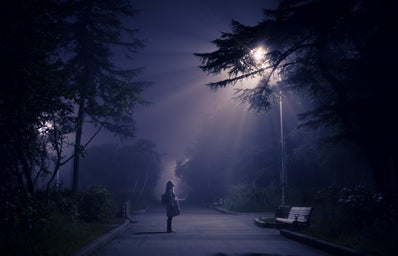As history repeats itself, the 2014 era has been resurrected with Sofia Coppola and The Chainsmokers rising in the media just as it had a decade ago. Amid the recent Saltburn craze, one of which I’m guilty of partaking in, actress Rosamund Pike has been going viral for her role as Elspeth Catton in the film. Rosamund Pike starred as Amy Dunne in David Fincher’s thriller, Gone Girl, in 2014: a film that I believe molded the grunge aesthetic of the 2010s after the release of the initial book written by Gillian Flynn. Reminiscing upon the last decade could be a separate article in itself; however, the rise of the 2010’s triggered a vague memory about a case that my older sister was consumed with a decade earlier, the real-life Gone Girl.
Just six months after the release of the psychological thriller, headlines seized the opportunity to call the disappearance of Denise Huskins ‘The Gone Girl Case’. The plot of the film begins with Amy and Nick, a married couple whose relationship is on the rocks after Nick’s affair. After Amy’s disappearance following a break-in to their home, Nick became a primary suspect after police found incriminating evidence of fabricated diary entries expressing fear that Nick would kill her. The end of the film deduces that the kidnapping was a hoax with Amy being alive and staging the crime in retaliation to Nick’s affair. Denise Huskins lived with her boyfriend Aaron Quinn and vanished on March 23rd, 2015, in her California home. Quinn reported Huskins’ disappearance the following day and claimed that a group of assailants broke into their home, kidnapped Huskins, and notably demanded a ransom of $8,500 US. Like the film, Quinn was a primary suspect.
Huskins reappeared 48 hours later outside her mother’s home in Huntington Beach, California claiming she was kidnapped not by Quinn. Interestingly, upon reading the abduction report, police pivoted their suspicions to Huskins herself. The couple was accused of orchestrating the crime and it was passed as a hoax. After Huskins and Quinn called investigator, Misty Carasau, about a neighbouring break-in. Matthew Muller, a disbarred Harvard law immigration attorney, was linked to the crime after investigators found a cell phone traced to Muller in the neighbouring home. Vallejo P.D. spokesman Lt. Kenny Park said at the time, “So, if anything, it is Mr. Quinn and Ms. Huskins that owe this community an apology.”
Why I bring this case up isn’t merely because I’m fascinated with researching true crime, but because I found this case particularly perplexing. How could the police, after the abduction of a young woman in her own home, almost immediately accuse her of staging her own crime? If the film had been released after the crime, would the media and investigators have taken a different approach and potentially saved months of resources? Was there even a motive found to eliminate any other suspects? In my perspective, Gone Girl was undoubtedly a confounding variable in the investigation. Just nine hours after the abduction on March 23rd, detective Matthew Mustard asked Quinn if he partook in an affair, telling him “I don’t think you’re being truthful,” after denying the claims. Investigating an individual at the crime scene is normal, but questioning the motive of the crime, like that of a blockbuster, is oddly suspicious. Without the tragic neighbouring break-in, Huskins and Quinn may have never gotten justice for their trauma – and worse yet, been falsely accused of orchestrating their own crime. Consuming media such as Gone Girl should be enjoyable, but not at the expense of innocence.
We have seen it in the media since the rise of communication devices: biases that distort the story after watching the media’s portrayal. The media dramatizes crime to highlight the psychological state of criminals as opposed to the crime itself. In 2017, Netflix’s book-to-show adaptation of 13 Reasons Why was quickly banned from library shelves in numerous school boards. The book highlighted taboo topics such as drug abuse, sexuality, and self-harm, thus, the Netflix show featured many difficult scenes. Arguments suggested that the popularity of the show caused the glamourization of youth suicide and drug addiction. Studies show that there was a 28.9% increase in American youth suicide as stated in the Journal of the American Academy of Child and Adolescent Psychiatry.
Now it is imperative to note that correlation does not equal causation. The spike in self-harm led to the book being banned among school districts. The question now is if the rise in cases after the show’s release was because of the supposed glorification of the topic, or if the media is just highlighting them more than usual because the show went viral. The media could be criticizing 13 Reasons Why for the alleged increase as opposed to focusing on the issue at hand: mental health resources for youth.
Now there is always a risk of glorification when creating artwork related to true crime or tragedy – and perhaps romanticizing violence. But when should the media be considered in playing a role in impacting true crime, versus when the media creates too strong of a bias? True crime can be educational, but in the case of Denise Huskins, the influence clouded the situation at hand. In the case of 13 Reasons Why, perhaps the show did have implications on rising suicide rates. So how far is too far for fictional crime and tragedy?
The dilemma is an ongoing issue of where the American justice system will stand. Check out Netflix’s American Nightmare on the notorious real-life Gone Girl.


